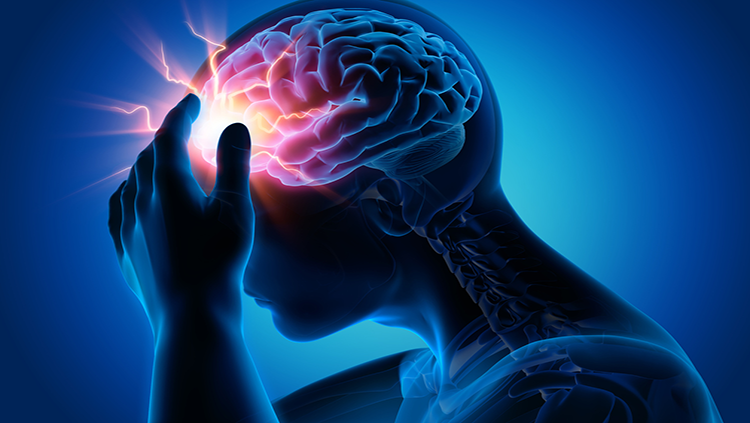“If In Doubt, Sit Them Out”: Concussion Update
In early February 2024, the Australian Institute of Sport (AIS) released the “Concussion and Brain Health Position Statement 2024.” It is a set of guidelines and recommendations for the management of concussions in sport. The release of these guidelines made national headlines, as they advocated for a significantly more conservative approach than previous concussion guidelines, particularly in children. The guidelines also outlined the critical role that physiotherapists play in the management of concussions. This article will take a deeper look into the guidelines, and discuss what it all means for us physiotherapists, and what it all means for you or your child.
What is Concussion?

The following definition of concussion is provided by the AIS guidelines :
“a traumatic brain injury caused by a direct blow to the head, neck or body resulting in an impulsive force being transmitted to the brain that occurs in sports and exercise-related activities. … Symptoms and signs may present immediately, or evolve over minutes or hours, and commonly resolve within days, but may be prolonged.”
Patricios et al. (2023)
Signs and symptoms can vary greatly between individuals, and can also vary between different concussions sustained at different times by the same individual. Each concussion is therefore unique, and the wide spectrum of presentations can subsequently make the diagnosis and management of a concussion challenging.
Recognize, Remove, Refer

To help make things easy, the AIS guidelines break down initial concussion management into 3 steps: Recognize, Remove, and Refer.
At the elite level, or in a situation where team medical personnel are present (i.e. Sports doctor, Physiotherapist), individuals are qualified to differentiate between mandatory signs of concussion, such as loss of consciousness, tonic posturing, or balance disturbance, and discretionary signs, such as clutching the head or being slow to get up.
Mandatory signs = immediate removal and no further play
Discretionary signs = removal for further assessment
Red flag symptoms (ex. seizure, neck pain, or repeated vomiting) = removal and immediate referral to the Emergency Department.
In recreational sport, or at youth level, where there may not be a trained health-care practitioner present, The Concussion Recognition Tool (CRT6) is an excellent resource to help identify concussions.


With the guidance of this resource, it is recommended that any suspicion of concussion by referees, coaches, trainers or teachers should result in the immediate removal of the athlete from the field, with the athlete not permitted to return to activity on the same day, and until they have completed a graded return to sport protocol and have been cleared by a healthcare practitioner, typically a sports-medicine doctor. In true Aussie fashion, the guidelines have summarized this advice into a simple rhyming easy-to-remember mantra:

It is advised that a more conservative approach be taken with children and adolescents. Those under 19 years of age and those without a dedicated health-care practitioner to guide recovery, are to be symptom free for 14 days (at rest) before return to contact training, and are not to return to competitive contact sport until a minimum of 21 days from the time of concussion.
Graded Return To Sport
Most sporting codes in Australia have protocols unique to each sport with respect to the appropriate steps to take from the initial day of injury to a full return to sport. These graded return to sport protocols generally share similar characteristics, with introduction of light exercise typically allowed after an initial 24-48 hours of relative rest, and several checkpoints needing to be cleared prior to progression to the next level — which is normally an increase in exercise intensity or mental load — before finally being cleared for contact, and then subsequently cleared for return to full sport.
The new AIS return to sport protocol for community and youth sport recommends at least 14 days symptom free (at rest) before return to contact/collision training. Furthermore, the recommendation is a minimum period of 21 days until the resumption of competitive contact/collision sport. Throughout this process, the AIS protocol advises that the temporary exacerbation of mild symptoms with exercise is acceptable, as long as the symptoms quickly resolve at the completion of exercise, and as long as the exercise-related symptoms have completely resolved before resumption of contact training.
As of March 6, the AFL has acted on these recommendations and adopted a new 21-day concussion protocol for all leagues that fall under the “AFL” banner, except for the AFL itself and AFLW competitions. This includes the VFL and VFLW, elite pathway competitions, and all community football competitions. With this new protocol, the earliest a player can return to play is on the 21st day after the day of the initial concussion.
The AFL and AFLW competitions remain unchanged, with the earliest that a player can return to football at this level still on the 12th day after the day on which the concussion was suffered.
How can a Physiotherapist help?
As part of a physiotherapist’s role in a sporting environment, they are often physically present to recognise a suspected concussion, remove the athlete from play, and also observe evolving concussion symptoms after the fact in clinic.

In most cases, physiotherapists are primarily involved in athlete monitoring and guidance through a graded return-to-sport framework, which will differ slightly depending on the sport. Occasionally if neck pain is present alongside concussion, physiotherapists can help to manage this with hands-on manual therapy techniques.

In more complex cases with prolonged symptoms, physiotherapists can help to identify vestibular and oculomotor impairments, and manage these accordingly with specific rehabilitation techniques. Physiotherapists are also in a position to recognise signs of deterioration in an athlete’s condition during the course of their recovery, and refer to the appropriate medical specialists.

If in doubt, sit them out! But once out, they’ll need some help getting back on the field! Get in touch if you or your child has recently been diagnosed with a concussion, and we’ll help guide you through each step with the help of your doctor to ensure a seamless transition back to sport!
References
Australian Institute of Sport (AIS). (2024). Concussion and Brain Health Position Statement 2024, Available from: https://www.concussioninsport.gov.au/__data/assets/pdf_file/0018/1132470/AIS-Concussion-and-Brain-Health-Position-Statement-2024-FINAL.pdf
Patricios J.S., Schneider K.J., Dvorak J., et al. (2023). Consensus statement on concussion in sport: the 6th International Conference on Concussion in Sport–Amsterdam. British Journal of Sports Medicine, 57(11), 695–711.


